You probably don't know about this Quaker church established by missionaries in the 1870s
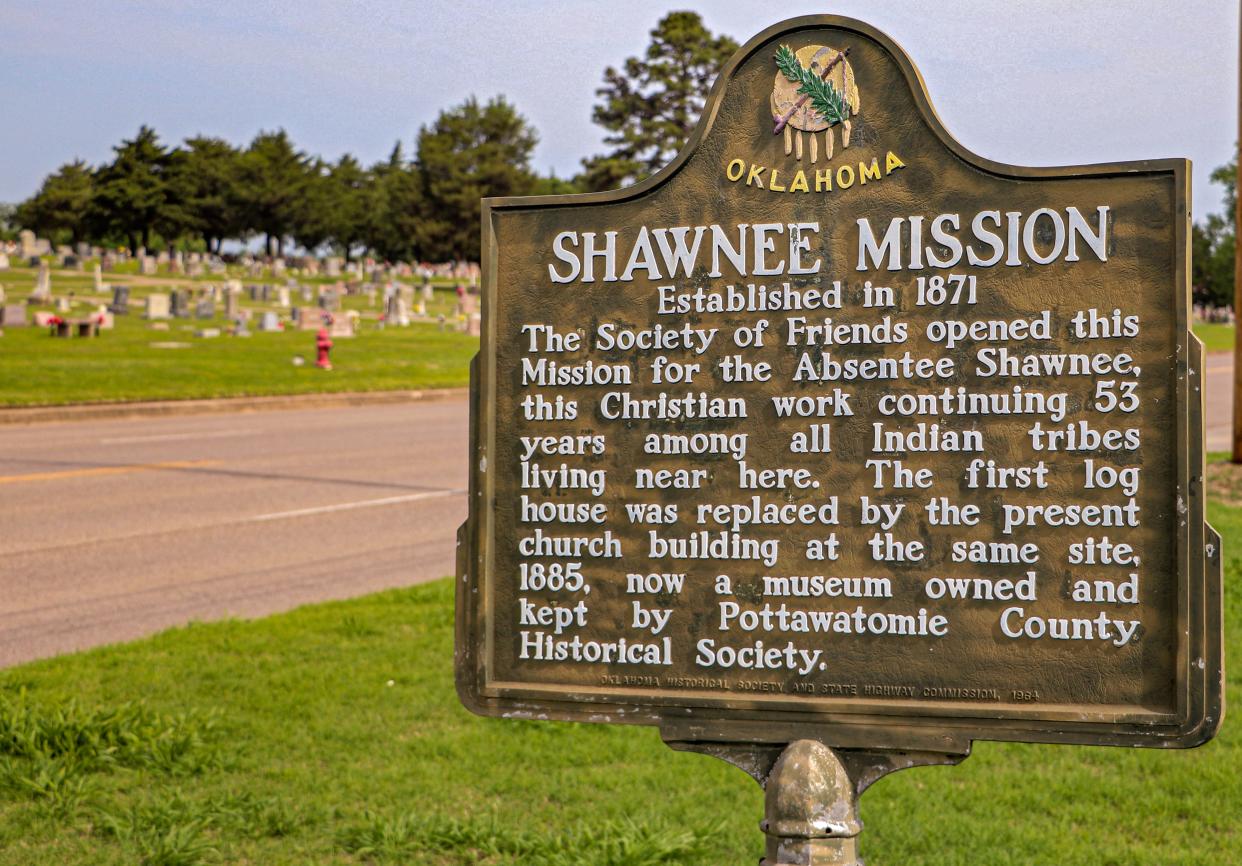
The little white church, shaped like a cross when seen from above, sits between an Absentee Shawnee casino and a Citizen Potawatomi Nation health care center.
It goes unnoticed by most people — separated from Shawnee's Gordon Cooper Drive by a lengthy field of grass — but within its walls, it holds countless tales of its time as a Quaker meeting house.
The church was built nearly a century-and-a-half ago by Quaker missionaries serving the Absentee Shawnee and other tribes that had been removed to central Oklahoma from their native homelands.
More: Oklahoma City transfers ownership of its oldest park to Innovation District developer
The Shawnee Friends Mission was established in 1871 by the Quaker missionary Joseph Newsom and his wife about a quarter mile north of the church standing today. The two-room building was built with wood hauled in by the Shawnee people from the Sac and Fox government mill about 35 miles away.
During this time, the area was known as Shawneetown, and by 1876 there was a post office and trading post. The city of Shawnee lists the establishing of the Quaker mission, along with cattle drives and railroads, as events that "foreshadowed the coming of white civilization" to the lands that had been reserved for tribes.
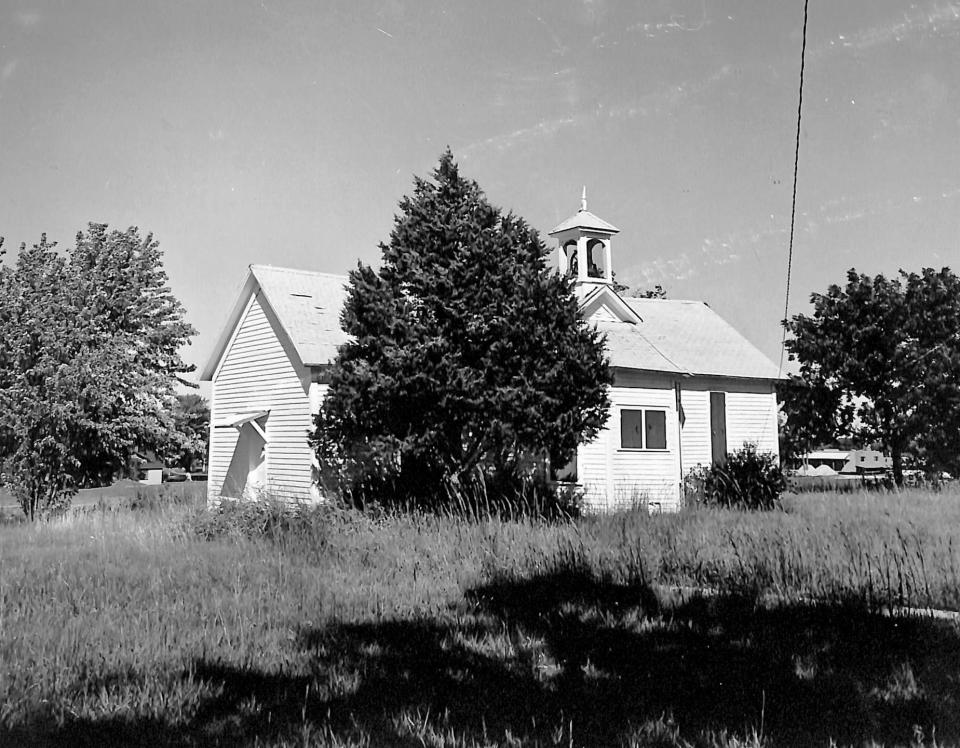
What is the Shawnee Friends Mission?
The Newsom family, consisting of Joseph, his wife and four children, began a day school at their church in 1872, which was turned into a boarding school by the federal government by 1874.
On the same site, the government added boys and girls dormitories, a school room, kitchen, dining room and employees rooms, according to a document written by the daughter of Thomas Wildcat Alford. Alford was the great-grandson of the Shawnee chief Tecumseh and attended the boarding school.
According to the application to put the church building on the National Register of Historical Places, from then to 1885 the U.S. Department of Interior required every employee at the school to be a Quaker.
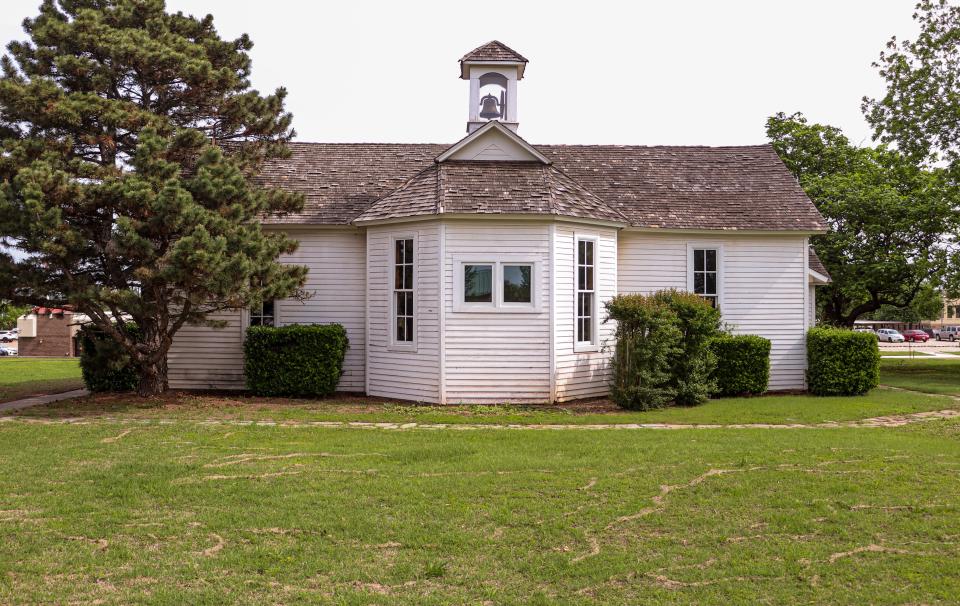
Not wanting to lose the religious aspect of their relationship with the Shawnee people, the Quakers built a log cabin where they held weekly meetings, eventually replaced by the white church building as early as 1879.
'A story for the ages': Meet the OKC couple who said 'I do' on board a Southwest flight
When whites began to settle the area after the 1891 Land Run, the mission began to open its doors to them, as well.
The mission may have been the first house of worship in Pottawatomie County, according to newspaper archives.
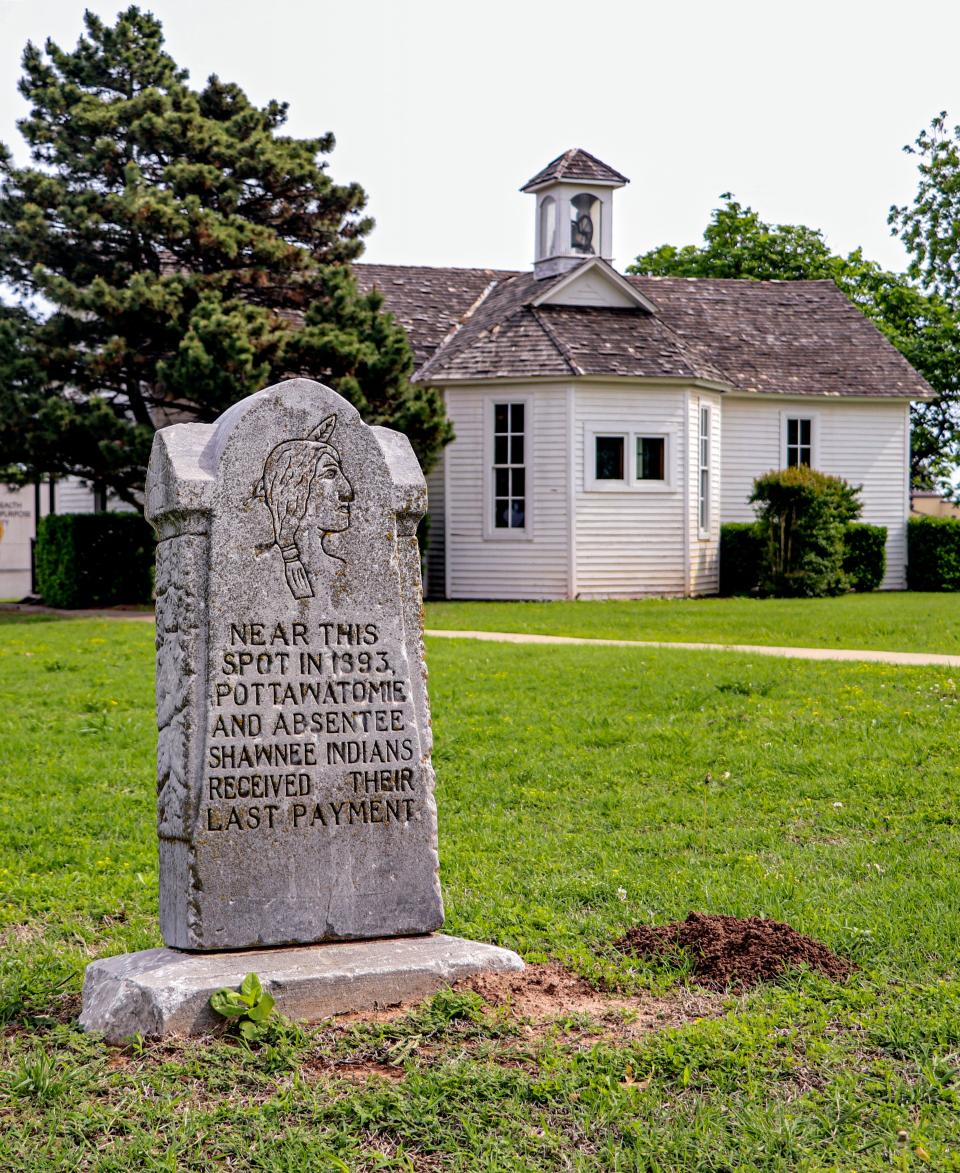
"It sat on the hill all by itself, there wasn't anything around it," said Ken Landry, director of the Pottawatomie County Historical Society.
A stone monument on the grounds says the Potawatomi and Absentee Shawnee tribes received their last payment from the government near the church.
What happened to the mission?
Fifty-three years after the mission was established, the Quakers abandoned the church in 1924.
It was sold to the Pottawatomie County Historical Society in 1936, with the request that the society restore the building, which had fallen into disrepair.
The society leased out the property for drawing oil, and with that money was able to "reroof the building, strengthen some of the uprights, and make other
general repairs," according to the national register application.
More: All but one of Oklahoma City's 2022 mayoral candidates file final contribution reports
The church building held historical society meetings and was the site of its museum as it gathered historical artifacts.
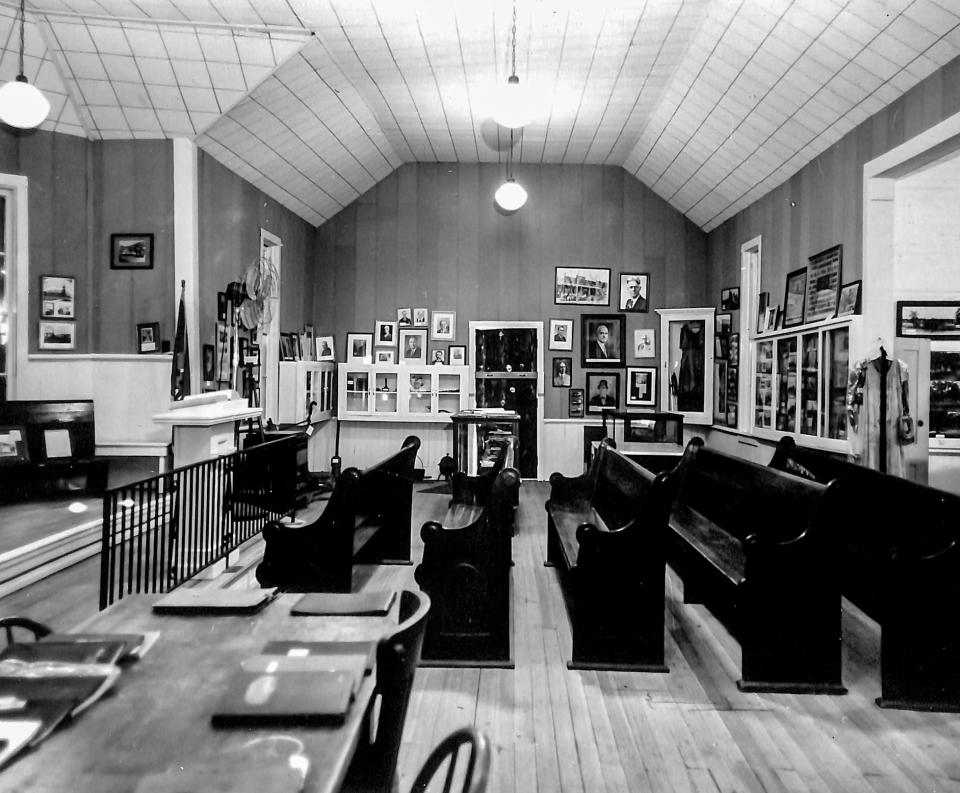
The building was placed on the National Register of Historical Places in 1972, thanks to an application by the Oklahoma Historical Society.
In 1982 the historical society gave the building back to the Quakers to move to its current home at the old Santa Fe Depot.
Today, the church is owned and maintained by the Citizen Potawatomi Nation and is occasionally used for weddings and other religious meetings and services.
Bill Everett, CPN maintenance director, said the pews inside the church are original and have been restored several times.
Why did the Quakers come to Shawnee?
Paula Palmer, a Quaker author and researcher on Quaker involvement in federal Native American boarding schools, said the Quakers had lived among the Shawnee people in their Ohio homelands and boarded about a dozen Shawnee students at a school they built near Wapakoneta.
When the Shawnee people were removed to lands in Kansas and Oklahoma, some Quaker missionaries followed them.
Among those who helped build the Quakers' first building in Shawnee was Thomas Wildcat, Alford's father. Alford attended the Quaker school from its inception, and after it was taken over by the government, before going to a Virginia boarding school where he converted to Christianity.
More: South Oklahoma City seniors heartbroken about losing Woodson senior center
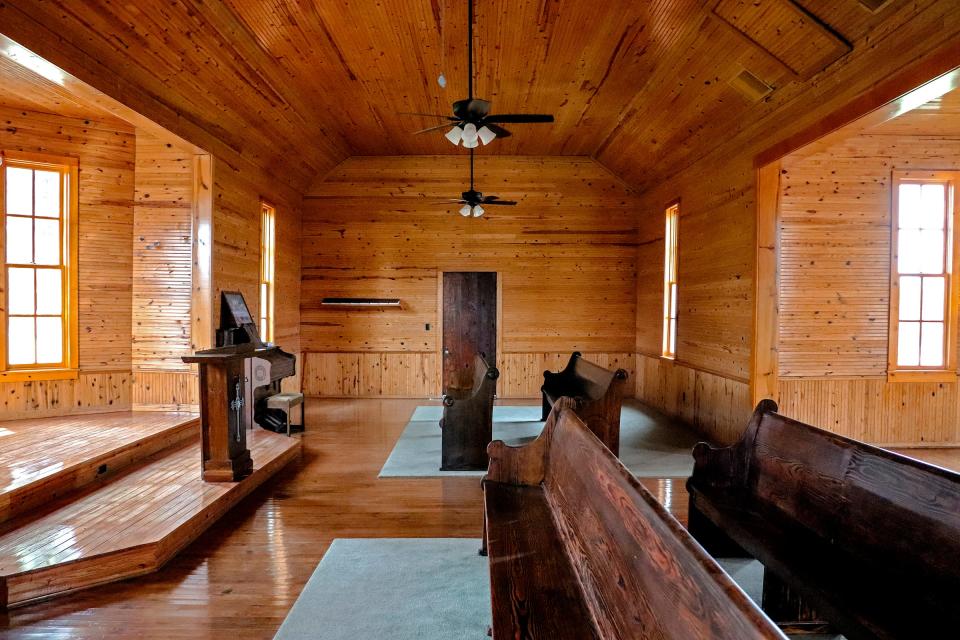
"During the first half of the 19th century, Christian missionaries from almost
all the denominations fanned out across the West, establishing missions and
schools, partially supported with funds allocated by the federal government
to 'civilize and Christianize the Indians,'" Palmer wrote in the research article, "The Quaker Indian Boarding Schools: Facing Our History and Ourselves."
The Quakers hoped to change "almost everything" about the lives of tribal members in order to prepare them for conversion to Christianity, Palmer wrote, including "their dwellings, their sustenance, their clothes, their hair, their language, their gender roles, their economy, their names, their marital practices."
A nation searching for healing from assimilation attempts
The impact of the boarding schools, and the attempts to remove Native people from their way of life, is seen today through "illness, depression, suicide, substance
abuse, violence, and poverty," Palmer wrote.
Child welfare systems in many states echo the boarding school era, she added.
"Our purpose in lifting up this history is not to shake our fingers at the Quakers or Catholics, or Methodists of past centuries," Palmer said. "Our purpose is to know the truth and then hold a mirror to our own faces and ask, 'Who are we today? How can we put ourselves on the right side of history now?'"
Palmer is the co-founder of Toward Right Relationship with Indigenous Peoples, which educates communities on the impact of Native American boarding schools.
The Quakers aren't the only religious group looking to unearth their past mistakes with tribes.
The Oklahoma Catholic Native Schools Project, a joint venture between the Archdiocese of Oklahoma City, the Diocese of Tulsa and Saint Gregory's Abbey, is an effort to understand the experiences of Native students in Oklahoma Catholic boarding schools from 1880 to 1965.
And the report ordered last June by the first Native American U.S. Secretary of Interior Deb Haaland, who is Laguna Pueblo, on federal Native American boarding schools was released Wednesday.
The report reviewed 408 federally run boarding schools, including 76 in Oklahoma, where school leaders regularly changed Native children’s names, cut their hair, forbid them from practicing any part of their culture and required students to complete military drills.
The report lists two Shawnee, Oklahoma, boarding schools, including one dedicated to the Absentee Shawnee that has a start date of 1971, the same year the Quaker missionaries established their mission.
This article originally appeared on Oklahoman: Shawnee, Oklahoma, is home to a former Quaker church, boarding school

